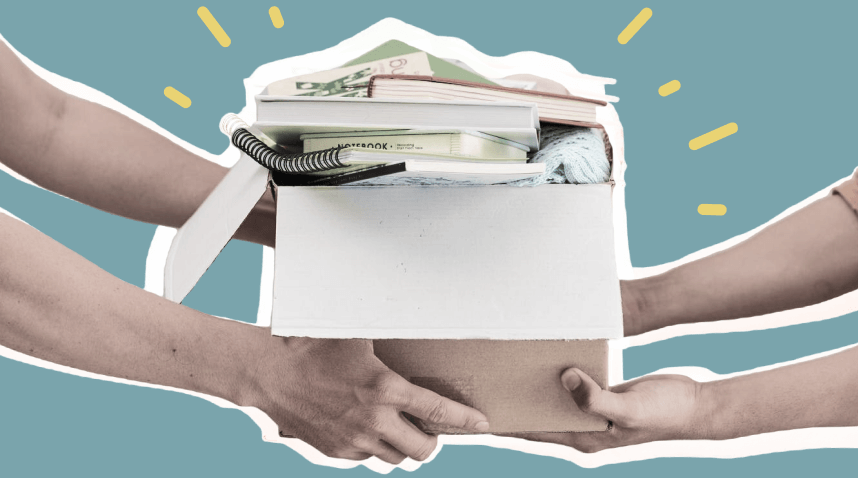TLDR: Balance respect for Buddhist teachings with environmental consciousness when decluttering. Discover mindful strategies for managing your Dhamma book collection, from digital alternatives to respectful recycling.
What should you do with Dhamma books you no longer need?
It’s a question that trips up even the most seasoned Buddhists. On one hand, the old-school method of burning them might have you worrying about your carbon footprint, but tossing them in the trash?
That just feels wrong. How about the recycling bin? Well, that doesn’t sit well with some folks either. Imagine your beloved Dhamma book getting tossed around with yesterday’s junk mail—or worse, ending up as something as undignified as toilet paper. It’s no wonder some Buddhists are on the fence about this option.
So, how do you honour these sacred texts without giving Mother Earth a hard time?
1. Reduce: Minimise accumulation
Let’s be real—how many Dhamma books do you actually read versus how many you just intend to read? It’s easy to end up with a bookshelf that’s more aspiration than inspiration. To avoid facing disposal dilemmas, don’t get yourself into the situation in the first place. How?
a. Go digital.
Next time you’re eyeing that shiny new Dhamma book, hit pause and ask yourself, “Is there an e-version for that?” Chances are, there is. Whether it’s on Amazon or other platforms, you’ll likely find both eBooks and audiobooks readily available. Even those free distribution physical books often have online versions.
Going digital doesn’t just keep your shelves from overflowing; it also means you can dive into the teachings anytime, anywhere, without the extra baggage.
b. Acquire selectively.
For many people, there’s just something special about holding a physical book—the feel of the pages, the scent of paper, and the satisfaction of turning a page. If that’s you, no worries—just be thoughtful about the Dhamma books you choose to bring home. “Only acquire books and items that you genuinely intend to use or read,” advises my Dhamma friend Heng Xuan. Not sure if you need your own copy?
Borrow one first! Whether from a friend or a Buddhist Library, borrowing helps you ensure that resources are used wisely.
c. Support paid distribution
Here’s an unpopular opinion: perhaps the free distribution of Dhamma books is part of the issue. Let’s admit it—Singaporeans love freebies and tend to grab things whether they need them or not.
As Bhante Paññādhammika explains, “When materials are given away for free, it can sometimes lead to hoarding. A nominal fee ensures that the items are valued and utilised thoughtfully.” Implementing a small fee could discourage this kind of hoarding.
To ensure that Dhamma books remain accessible to everyone without turning it into a commercial venture, we could try a “pay what you wish” model or suggest a small donation. This way, those who can afford to contribute will do so, and those who can’t will still have access to these precious teachings.
2. Reuse: Extend the Life of Dhamma Materials

For Dhamma books, you no longer need them but are still in good shape. You can explore ways to give them a second life. Here are a couple of creative ways to ensure that these resources keep inspiring others while being connected to the Buddhist community:
a. Share and Repair:
Keep the cycle of wisdom going by passing on your Dhamma books and items as long as they’re still in usable condition. This not only extends their life but also beautifully aligns with the Buddhist principle of generosity. Add a personal touch by sticking a note inside where readers can jot down their names and the date they finished reading. This simple act can create a sense of community and continuity, letting future readers see that they’re part of a larger network of fellow practitioners.
b. Donate online:
Donating online ensures that Dhamma teachings reach those who need them, especially in areas with limited resources. Platforms like eBay, Amazon, and specific Buddhist forums such as r/Buddhism are ideal for sharing these materials. A Buddhist friend noted that because free Dhamma books are typically distributed at local temples, practitioners overseas might lack access to these resources, unlike books available for purchase in stores. Once you’ve found someone interested, mail the books their way, with the recipient covering the shipping costs. It’s a win-win!
c. Donate offline
Some temples or monasteries might welcome your Dhamma materials and even have special shelves for them. However, it’s crucial to obtain permission before making a donation. Improperly managed donations can pose challenges for the temple and may affect its ability to serve the community effectively. It’s important not to offload your disposal dilemma onto the temple, as this can lead to complications and hinder their operations.
If you’re in Singapore, donating to the collection at The National Library of Singapore is another viable option. They welcome donations of published and unpublished works in good condition, with a preference for materials relating to Southeast Asian society, culture, and history.
3. Recycle: Do it mindfully and skillfully

If recycling is the only option left, do so with respect and mindfulness. Here are some ways you can go about it.
a. Show Appreciation:
When disposing of Dhamma items, it’s important to honour their significance. Consider reciting a prayer or chant that has meaning to you to acknowledge the value of the teachings as you part with them. As a follower of the Pali tradition, I would chant ‘Namo Tassa Bhagavato Arahato Samma-Sambuddhassa’. This chant pays homage to the Buddha and recognises the qualities of an awakened being.
Alternatively, channel your inner Marie Kondo by expressing gratitude for the role these items played in your spiritual journey before letting them go. Reflect on the lessons learned and integrate those teachings into your daily life as the ultimate form of appreciation.
b. Contemplate on impermanence:
It’s natural to feel a twinge of guilt or worry during disposal, with concerns about improper handling or fears of bad kamma. To counteract this, focus on the impermanence of physical objects.
Acknowledge that the book has fulfilled its purpose and is now transitioning into a different form. By contemplating this, you can release attachments and anxieties associated with the disposal process, maintaining your spiritual practice without undue stress.
c. Timing and Sensitivity:
Sometimes, it’s not just about your state of mind but also how others might feel about disposing of Dhamma items. When you’re alone, you can be mindful of your mental state, but when others are involved, it’s easy for feelings to get complicated.
Consider waiting for the right moment to throw things away to avoid triggering negative reactions in others. It’s also beneficial to encourage a balanced perspective on disposal practices within your community. By fostering a shared understanding, everyone can approach the process with greater respect and mindfulness.
But will I create bad “Kamma” by recycling Dhamma books?
The term “Kamma” traditionally refers to action, though it is often interpreted today as the consequences one faces from their actions. When it comes to recycling Dhamma books, this action is not inherently bad kamma (action) if done with respect and a genuine intention to preserve both the books and the environment.
The Buddha teaches us that the ethical quality of our actions hinges on our intentions. If your goal is to treat the books with respect and ensure they don’t deteriorate, recycling them can indeed be a responsible and wholesome choice.
However, if the process is accompanied by aversion—such as frustration or a sense of burden—or if you handle the books irresponsibly without mindfulness or respect, these actions can be deemed akusala, or unwholesome. Additionally, dwelling on negative emotions or thoughts like remorse or self-reproach after the act can also lead to negative outcomes.
Hence, the key is to approach the process with a mindful and compassionate attitude, ensuring that your actions align with positive intentions.
So which do you choose?
Each of these methods—whether recycling, donating, or even burying Dhamma books—reflects a broader understanding of the importance of respect, mindfulness, and intention when dealing with sacred materials. The key is to approach the process with reverence and a clear mind, ensuring that the Dhamma books are honoured even as you part with them while maintaining a harmonious relationship with the teachings and the world around us.
Ultimately, the Buddha taught us not to cling to rites and rituals, and not to cling onto views. The key is to act with the best intentions and to do your best while letting go of attachment to the outcome. Trust in the natural unfolding of results and maintain a sense of equanimity about the process.
Wise Steps:
- Minimise Accumulation: Choose digital versions or borrow books to reduce the need for physical copies and avoid future disposal dilemmas.
- Extend the Life: Share, donate, or repurpose your Dhamma books mindfully to continue their benefit to others.
- Recycle Respectfully: When recycling, handle the books with reverence and contemplate their impermanence to maintain a positive and mindful attitude.


